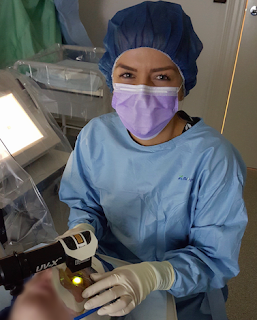National Diabetes Week
It's About Time... for increased awareness of an Orthoptics role with detecting, diagnosing and monitoring Diabetes eye changes!
National Diabetes Week is taking place from July 8th to 14th with the campaign, “It’s About Time” which aims to raise awareness of early detection and management of all types of diabetes. As Orthoptists, we play a significant role in the early detection, diagnosis and monitoring of diabetic eye changes.
Most diabetics are unaware of the importance of having their eyes routinely examined. However, individuals with diabetes are at a higher risk of developing eye problems such as cataracts and glaucoma. Additionally, the disease has an effect on the retinal blood vessels such as haemorrhaging, swelling and weakening. This poses a major threat to healthy eyesight and is commonly referred to as diabetic retinopathy.
Therefore, anyone diagnosed with Type 1 or Type 2 Diabetes needs to have their eyes examined regularly by an Ophthalmologist (eye doctor) and registered Orthoptist. Factors such as duration and control of blood sugars are also important indicators of developing diabetic eye changes.
What does an Orthoptist do for a patient with diabetic eye changes?
An Orthoptist works in conjunction with an Ophthalmologist to perform any pre-diagnostic testing. This allows the doctor to make the best clinical decision for potential treatments. The Orthoptist will begin the consult by taking a full clinical history of any previous vision changes the patient may have noticed, such as blurred vision, flashes and floaters, and/or sudden vision loss. They will then conduct visual acuity measurements to identify possible vision loss and also instil eye drops to dilate the pupils. The dilating eye drops enable a larger view of the inside and back of the eyes, where diabetic eye changes readily manifest.
An Orthoptist may also perform Optical Coherence Tomography (OCT), which is a 3D diagnostic scan of the retina to provide a more detailed examination of each retinal layer. They may also be required to perform fluorescein angiography and retinal photography to look for additional hallmarks of diabetic retinopathy. Pieced together, these tests aid the ophthalmologist in providing the patient with a clear clinical picture and thus appropriate management can be planned.



Comments
Post a Comment